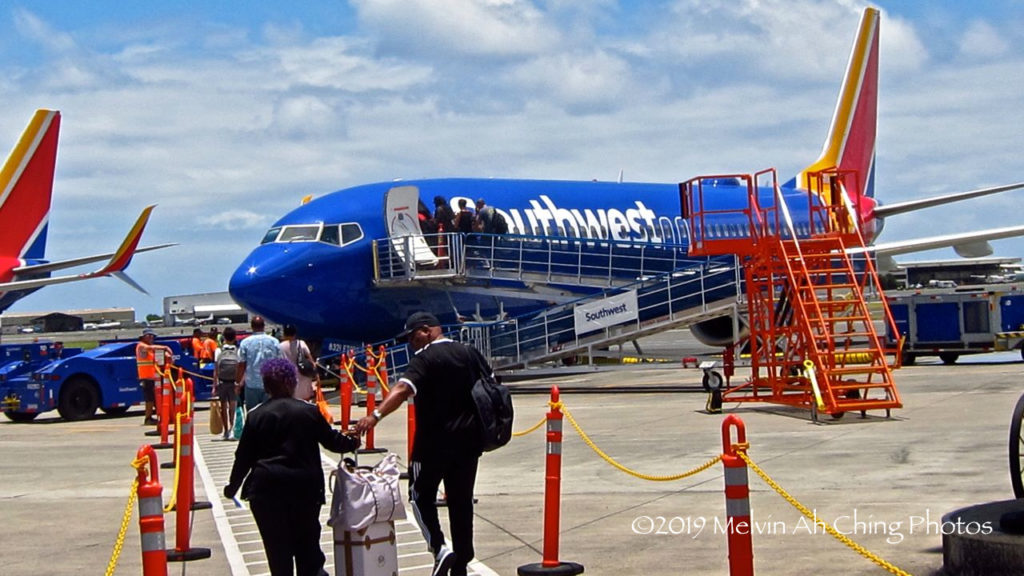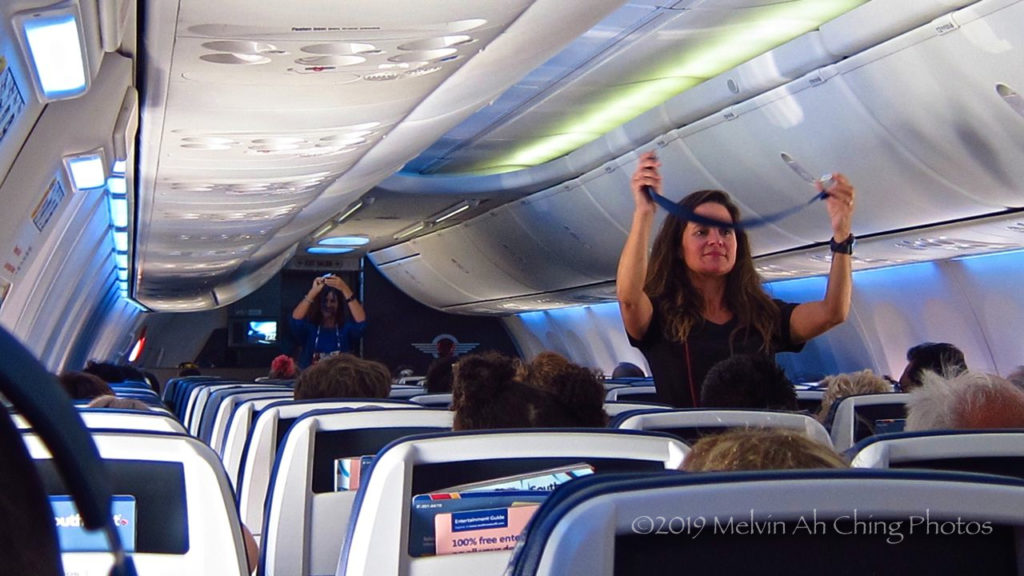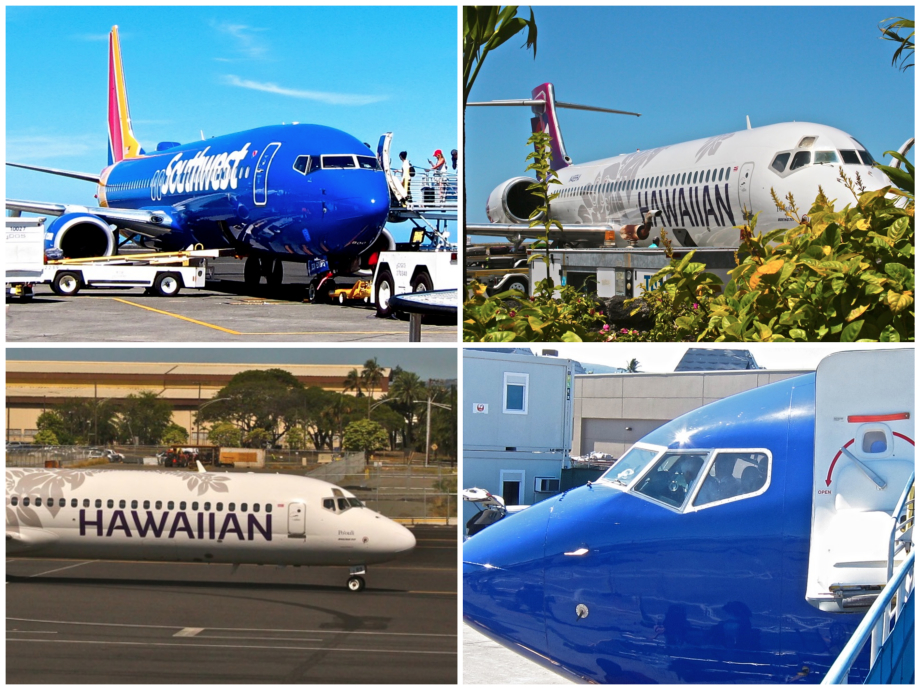Flying Inter-island on Southwest Airlines
I flew on Southwest Airlines for the first time ever, on an inter-island round-trip from Honolulu to Kona and back last month (July 2019).
Southwest Airlines is the newest carrier flying inter-island routes in the State of Hawaii. They are well known for low fares, free flying bags, unassigned seats, no change fees and an all Boeing 737 fleet that flies to many destinations within the U.S. and beyond. This year Southwest expanded their service to Hawaii starting this past March.
They currently fly from Oakland and San Jose California to Honolulu and Maui’s Kahului Airport. Their inter-island flights travel between Honolulu, Maui and Keahole-Kona. Southwest is planning to expand their service to Lihue, Kauai and Hilo.
My flight experience on Southwest was pleasant.

Tickets: Like all other airlines you can buy your tickets through Southwest’s website. I was pleased with the fares they offered. A one way trip to Kona from Honolulu was $39. The price was the same going back. I bought a round-trip, which cost in total $78. There are higher priced tickets if you choose to get those. From what I observed, paying a higher price gets you earlier boarding into the airplane.
Check-In: At Daniel K. Inouye Honolulu International Airport, the Southwest check-in area is in the massive Terminal 2 complex where all of the overseas and domestic flights of various airlines are intermingled. Near the drop-off curve, the Southwest check-in counter is in a central location before the United Airlines section next to WestJet.
Once there all you have to do is enter your ticket number in the computerized kiosk, enter how many bags you want to check-in (remember first two checked bags fly for free) and wait for the terminal to print out your boarding pass, bag tag and claim check. From there walk to the Southwest person collecting the checked-in bags and proceed to the long TSA security line and then finally, to the gate.
At Honolulu, the walk to the gate seemed to be more than a half mile away from the check in area. Southwest is located at Gates G6 to G10 in the most extreme end of the Diamond Head concourse, way past United Airlines and other carriers that park in that area.
In fact, Southwest’s gates seem to be a recent add-on to the complex where passengers have to take an escalator to a lower level because boarding is not through a jet bridge. Instead you board through a zig-zag roll-up ramp, similar to what will greet you at Kona.
Speaking of Kona, my check-in procedure there was the same, except that I arrived very early and a friendly Southwest clerk handled my check-in instead of a kiosk. That was nice. The gate at Kona is much closer to the check-in area and the security line was very short.
Boarding: The waiting area for Southwest Airlines at Honolulu is near Gates G6 to G10. At the time I was there, there were three flights pending departure. One was to San Jose, the other to Maui and mine to Kona. The waiting area was full. Fortunately they have free wifi at Honolulu now as well as charging stations for your phone or other devices through USB. Waiting for my flight was pleasant.
A similar pleasant wait also occurred in Kona, but as most people who fly out of there, no air conditioning with light island breezes and so far no wifi or USB.
All seats on Southwest are single class and unassigned. Passengers are assigned seating priority numbers such as A10, B25 or C30. The numbers for each group range between 1 and 60. People form queues within each of the group letters called. The A line boards first, the B line next and the C line last, as it was with me at Honolulu. I suspect all of the passengers flying with the cheapest tickets are in the C line.
On a full flight this could be a problem if you want a specific seat on the aircraft. My flight to Kona was not filled to capacity, and after boarding with the C group, I found a nice comfortable window seat near the wing for a great in-flight view.
The situation on the return flight from Kona was almost the same, though on that full flight we were only split into an A and B group.
At each queue, passengers line-up next to the iPad signs labeled A, B or C 1 – 30 and 31 – 60.
Boarding the aircraft is through the outside zig-zag ramps that lead up to the aircraft.

In-Flight: One thing I was impressed with was the size of the Boeing 737-800NG jet. It is a single aisle jet with wide three abreast seating that is typical of the type. I got to my window seat and was impressed as to how wide and comfortable the seat was. I think on the plane that I flew to Kona on, the seat was very plush. However on the flight going back to Honolulu, the seat fabrics, though wide, seemed to be a newer vinyl type. Regardless the seats are big and comfy with ample legroom to spare.
I got a window seat on both flights. The boarding procedures even for my cheap tickets were not a problem.
The overhead bins are massive with ample room for my camera bag that contained a Canon DSLR with lens and a number of accessories. Under the seat in front of me, I stored a fragile, glass framed document that I had to present at my destination far north of Kona.
Once settled, the flight attendants made the usual safety announcements which included emergency landing procedures, location of emergency exits, oxygen masks and life vests. Unlike other inter-island carriers that I have flown over the years, Southwest does carry life rafts on their planes, which for me is extremely important for over water flights.
At take-off you can feel the power of the Boeing 737-800 NG as its engines roar to life and quickly provide the necessary thrust to get the jet off the ground and up into the air in no time. Taking some time to climb, the jet leveled off at nearly 30,000 feet for its 35 minute flight to Kona.

In flight service for the short trip included a complimentary cup of either juice or water and a small bag of Southwest branded mini pretzels. Cute. On my return trip, I also brought my own granola bar for consumption.
One thing that impressed me for this short flight was in-flight wi-fi. Nice… I could text my sister in real time with my Google Voice app and send her a picture of the wing as the plane flew through the clouds. I also checked my Facebook app and email. Southwest’s inflight magazine stated the wifi was good to also stream video and audio. I did not try that as the flight was too short.
After about 15 to 20 minutes climbing and maintaining altitude, it was time to descend. It took another 15 minutes or less for the 737 to land on Kona’s long runway and taxi to the gate.
In all the flight both going to Kona and coming back to Honolulu was a pleasant experience. I will definitely fly Southwest again.
Post Flight: After arrival, departure from the plane was through the zig-zag ramp at Kona, as they have no jet bridges there. No problem for me, and it gives me an opportunity to take pictures of the planes as they are parked on the tarmac. My checked-bag joined me with no problem at Kona nor during the return to Honolulu.

Comparison to Hawaiian Airlines: As a longtime customer of Hawaiian Airlines I can not help but compare this flight to previous ones taken on HAL. Quickly here are my observations:
Ticket Price: Until Southwest came into the market, Hawaiian Airlines charged fairly high prices for travel between the islands. A typical discount ticket from Honolulu to Kona or Hilo was about $80 to $95 each way. Regular fare is often over $100.
Back in May I flew on Hawaiian for $78 one way to Kona and $29 from Kona back to Honolulu. This was when Southwest first started their inter-island service. Competition has driven some of Hawaiian’s ticket prices downward, which is good for local residents.
Southwest tickets at $39 each way (or lower) will definitely be a draw for me.
Hopefully when Southwest starts flying into Hilo, prices will adjust accordingly.
Checked-bags: The first two bags on Southwest fly free. Definitely a winner for me! Bags flying inter-island on Hawaiian are subject to a $25 fee for the first bag and $35 for the second.
Aircraft: For inter-island flights, Hawaiian maintains a fleet of twenty Boeing 717 jets that have been out of production since 2006. They bought many of them brand new in 2001. From that time to 2015 I loved Hawaiian Airlines’ Boeing 717. The planes were comfortable with cushy, soft, cloth reclining seats. Starting in 2015, Hawaiian decided to squeeze more passengers into their Boeing 717. They took out all of the comfy seats and replaced them with narrow, “Slimline” plastic benches, similar to what you would find on a bus. Legroom also got tighter. I have complained about them ever since.
Otherwise Hawaiian’s Boeing 717 is still a good, reliable plane, though I have to suspect after many thousands of take-off and landing cycles they are close to being replaced by something else. Speculation is on the Airbus A-220.
That said, since Southwest does fly a bigger and more comfortable plane inter-island, my nod at this time goes to the 737-800NG, which started with the airline in 2012.
Southwest plans to put the currently grounded Boeing 737-Max planes into service for Hawaii routes. That may give me pause to think before flying. I tend to wait for a new, troubled airplane to prove itself after suffering catastrophic losses on previous flights.
Service: I think both Hawaiian and Southwest offer good service. For inter-island flights you can’t expect too much while in-flight since the times between islands are so short. Both airlines have friendly flight attendants and decent in-flight drinks (juice and water on both; optional beverages on Hawaiian). Southwest does have pretzels and free wifi. Both have nice in-flight magazines with interesting articles and information. Hawaiian does let you take the magazine with you as you de-plane. Hawaiian also offers free maps to departing passengers on flights to the neighbor islands.
One thing Hawaiian has over Southwest is a very good inter-island route system and flight frequencies. This is attributable to Hawaiian’s long standing stature was Hawaii’s major airline. They serve all five major airports plus the two smaller airports on Molokai and Lanai. I don’t see Southwest becoming a deep player at this time in the inter-island market.
In the end, I think it depends on what your priorities are as to who you will select as your inter-island air carrier on your next island hopping trip.
P.S.: If you like flying on smaller prop planes to rural airports such as Princeville, Kalaupapa, Kapalua, Hana and Waimea-Kohala, then Mokulele Airlines and Makani Kai Air are viable options.
